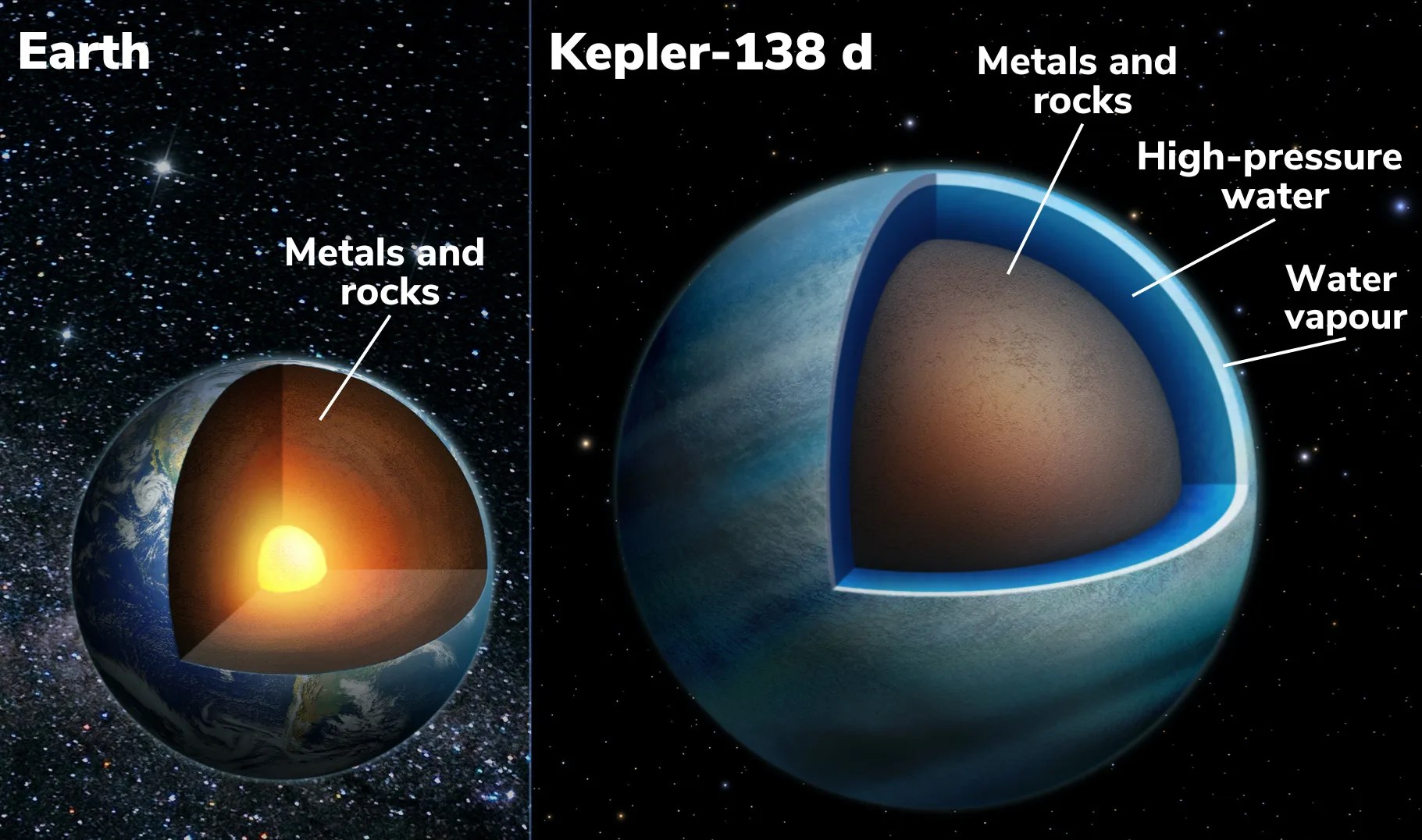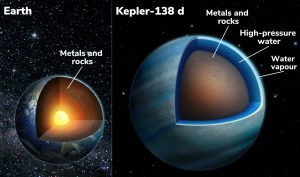
hubble_kepler138d_stsci-01gksazkgaz65ryzg7bj8wpccz
This is an artist's illustration showing a cross-section of the Earth (left) and the exoplanet Kepler-138 d (right). Like the Earth, this exoplanet has an interior composed of metals and rocks (brown portion), but Kepler-138 d also has a thick layer of high-pressure water in various forms: supercritical and potentially liquid water deep inside the planet and an extended water vapor envelope (shades of blue) above it. These water layers make up more than 50% of its volume, or a depth of about 1,243 miles (2,000 kilometers). The Earth, in comparison, has a negligible fraction of liquid water with an average ocean depth of less than 2.5 miles (4 kilometers).
Image Credit: Benoit Gougeon (University of Montreal)
- X
https://science.nasa.gov/image-detail/hubble_kepler138d_stsci-01gksazkgaz65ryzg7bj8wpccz/
Image CreditBenoit Gougeon (University of Montreal)
Size1024x605px



























